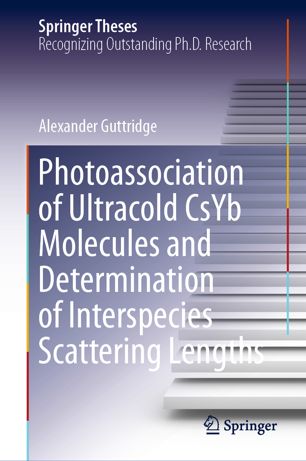

Most ebook files are in PDF format, so you can easily read them using various software such as Foxit Reader or directly on the Google Chrome browser.
Some ebook files are released by publishers in other formats such as .awz, .mobi, .epub, .fb2, etc. You may need to install specific software to read these formats on mobile/PC, such as Calibre.
Please read the tutorial at this link: https://ebookbell.com/faq
We offer FREE conversion to the popular formats you request; however, this may take some time. Therefore, right after payment, please email us, and we will try to provide the service as quickly as possible.
For some exceptional file formats or broken links (if any), please refrain from opening any disputes. Instead, email us first, and we will try to assist within a maximum of 6 hours.
EbookBell Team

4.3
8 reviewsThis thesis lays the groundwork for producing a new class of ultracold molecule by associating an alkali-metal atom and a closed-shell alkaline-earth-like atom, specifically Cs and Yb. Such molecules exhibit both a magnetic dipole moment and an electric dipole moment in their ground state. This extra degree of freedom opens up new avenues of research including the study of exotic states of matter, the shielding of molecular collisions and the simulation of lattice spin models.
In detail, the thesis reports the first and only ultracold mixture of Cs and Yb in the world, giving details of the methods used to cool such contrasting atomic species together. Using sensitive two-colour photoassociation measurements to measure the binding energies of the near-threshold CsYb molecular levels in the electronic ground state has allowed the previously unknown scattering lengths to be accurately determined for all the Cs–Yb isotopic combinations. As part of this work, the one-photon photoassociation of ultracold Cs*Yb is also studied, yielding useful information on the excited-state potential. Knowledge of the scattering lengths enables a strategy to be devised to cool both species to quantum degeneracy and, crucially, determines the positions of interspecies Feshbach resonances required for efficient association of ground-state CsYb molecules. With these results, the prospect of bringing a new molecule into the ultracold regime has become considerably closer.